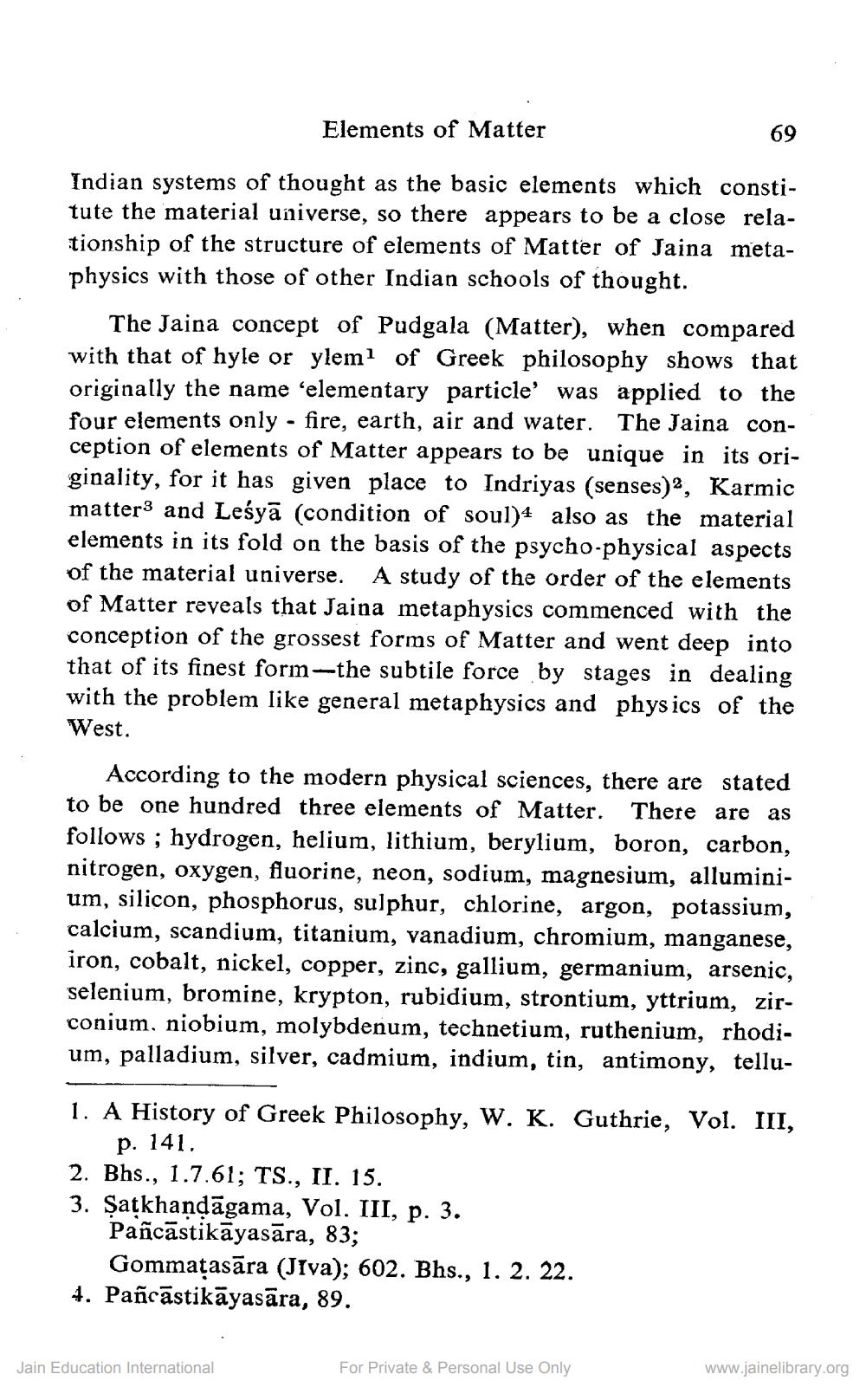________________
Elements of Matter
Indian systems of thought as the basic elements which constitute the material universe, so there appears to be a close relationship of the structure of elements of Matter of Jaina metaphysics with those of other Indian schools of thought.
The Jaina concept of Pudgala (Matter), when compared with that of hyle or ylem? of Greek philosophy shows that originally the name 'elementary particle' was applied to the four elements only - fire, earth, air and water. The Jaina conception of elements of Matter appears to be unique in its originality, for it has given place to Indriyas (senses), Karmic matters and Leśyā (condition of soul)4 also as the material elements in its fold on the basis of the psycho-physical aspects of the material universe. A study of the order of the elements of Matter reveals that Jaina metaphysics commenced with the conception of the grossest forms of Matter and went deep into that of its finest form--the subtile force by stages in dealing with the problem like general metaphysics and physics of the West.
According to the modern physical sciences, there are stated to be one hundred three elements of Matter. There are as follows ; hydrogen, helium, lithium, berylium, boron, carbon, nitrogen, oxygen, fluorine, neon, sodium, magnesium, alluminium, silicon, phosphorus, sulphur, chlorine, argon, potassium,
alcium, scandium, titanium, vanadium, chromium, manganese, iron, cobalt, nickel, copper, zinc, gallium, germanium, arsenic, selenium, bromine, krypton, rubidium, strontium, yttrium, zirconium, niobium, molybdenum, technetium, ruthenium, rhodium, palladium, silver, cadmium, indium, tin, antimony, tellu
1. A History of Greek Philosophy, W. K. Guthrie, Vol. III,
p. 141. 2. Bhs., 1.7.61; TS., II. 15. 3. Satkhandāgama, Vol. III, p. 3.
Pañcāstikāyasāra, 83;
Gommațasāra (Jiva); 602. Bhs., 1. 2. 22. 4. Pañcāstikāyasāra, 89.
www.jainelibrary.org
Jain Education International
For Private & Personal Use Only




